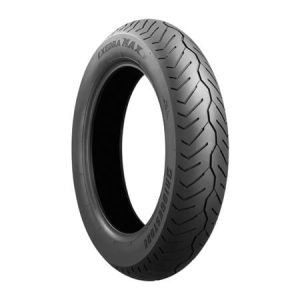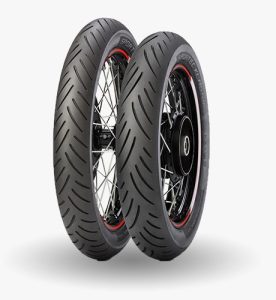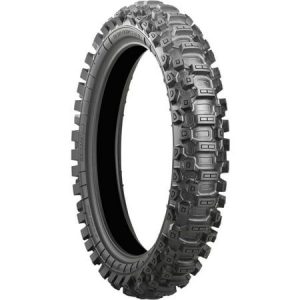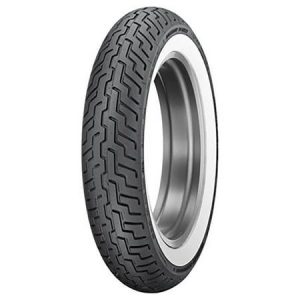For motorcycle riders, safety is paramount. Every component on your bike plays a crucial role, and your tires are undeniably some of the most important. They’re the only point of contact between your machine and the road, influencing handling, braking, and overall performance. But how long do motorcycle tires actually last? Unlike car tires, motorcycle tires have a shorter lifespan and require more frequent checks due to factors like riding style, storage conditions, and age.
This guide dives deep into the world of motorcycle tire lifespan, exploring the key factors that influence how long your tires will stay safe and reliable. We’ll also provide tips on maximizing tire life and crucial signs that indicate it’s time for a replacement.
Understanding Tire Lifespan: It’s Not Just About Mileage
Unlike car tires, which are typically replaced based on tread wear, motorcycle tire lifespan is influenced by a combination of factors. Here are the key elements to consider:

- Tire Age: Rubber naturally deteriorates over time, even if the tires haven’t been used much. This process, called oxidation, hardens the rubber and reduces its grip. Most manufacturers recommend replacing motorcycle tires after 5-6 years, regardless of tread depth.
- Tread Depth: This is a measurable indicator of tire wear. Motorcycle tires have designated wear bars that become visible when the tread depth reaches its minimum safe limit. However, don’t wait until you hit the wear bars – replace your tires well before that point for optimal safety.
- Riding Style: Aggressive riding, frequent hard braking, and leaning heavily into corners can accelerate tire wear. Conversely, a more relaxed cruising style will put less stress on your tires and potentially extend their lifespan.
- Storage Conditions: How you store your motorcycle can also impact tire life. Ideally, store your bike in a cool, dry, and well-ventilated area. Avoid direct sunlight and extreme temperatures, as these can accelerate rubber degradation.
- Load: The weight you carry on your motorcycle, including yourself, passengers, and luggage, can affect tire wear. Heavier loads put more strain on the tires, potentially leading to a shorter lifespan.
Decoding the Tire Sidewall: Finding the Manufacturing Date
So, how do you determine the age of your motorcycle tires? The answer lies on the tire sidewall. All DOT-approved motorcycle tires (which is the vast majority of tires sold in the United States) come with a Tire Identification Number (TIN). This alphanumeric code contains vital information, including the manufacturing date.

The TIN typically consists of 11 characters, with the last four digits representing the week and year of manufacture. For example, a TIN ending in “1220” indicates the tire was manufactured in the 12th week of 2020. Remember, most manufacturers recommend replacing motorcycle tires after 5-6 years from their production date, regardless of tread depth.
Tread Depth: Knowing When to Replace Based on Wear
While tire age is a crucial factor, tread depth remains a critical indicator for replacement. Motorcycle tires have designated tread wear bars molded into the tread grooves. Once the tread wears down to the level of these bars, it’s time to replace the tire. These wear bars are typically located at the main points of contact with the road – the center of the tread and the edges.
Here’s a breakdown of recommended minimum tread depths for motorcycle tires:
- Sport tires: 2-3 millimeters
- Touring tires: 3-4 millimeters
- Dual-sport tires: 4-5 millimeters
It’s important to note that these are just general recommendations. Consult your motorcycle’s owner’s manual for specific recommendations based on your bike’s type and intended use. Additionally, some riders prefer to replace their tires before reaching the minimum tread depth for optimal performance and safety, especially for aggressive riding styles.
Visual Inspection: Signs Your Tires Need Replacing
Beyond tread depth and tire age, there are other visual signs that indicate your motorcycle tires need replacing. Here’s what to look for:

- Cracking: Small cracks in the sidewall rubber can indicate age-related deterioration and pose a safety risk.
- Bulges or Deformations: Uneven bulges or deformations on the tire surface can be caused by internal damage and warrant immediate replacement.
- Punctures or Cuts: Even seemingly small punctures or cuts can compromise the tire’s integrity and should be addressed by a qualified professional. Remember, not all punctures are repairable.
If you notice any of these signs during your routine motorcycle inspection, don’t hesitate to schedule a tire replacement with a qualified technician.
Maximizing Your Motorcycle Tire Lifespan: Ride Smart, Maintain Well
While there’s no magic formula to make your motorcycle tires last forever, there are certainly steps you can take to extend their lifespan and ensure optimal performance:

- Maintain Proper Tire Pressure: Incorrect tire pressure can lead to uneven wear and reduced tire life. Regularly check your tire pressure (cold) according to the manufacturer’s recommendations, which can be found in your owner’s manual or on a sticker located near the swingarm or fork.
- Avoid Burnouts and Hard Braking: Aggressive maneuvers like burnouts and excessive hard braking generate significant heat, which can accelerate tire wear. While the occasional spirited ride is certainly part of the motorcycling experience, prioritize smooth and controlled riding for longer tire life.
- Warm Up Your Tires Properly: Just like your engine, your tires need time to warm up before reaching peak performance and grip. Avoid aggressive riding when your tires are cold. Take the first few miles of your ride at a moderate pace to allow the tires to reach their optimal operating temperature.
- Proper Chain Maintenance: A misaligned or improperly lubricated chain can cause uneven tire wear. Regularly clean, adjust, and lubricate your chain according to the manufacturer’s recommendations.
- Store Your Motorcycle Properly: As mentioned earlier, proper storage conditions can significantly impact tire lifespan. When not in use, store your motorcycle in a cool, dry, and well-ventilated area out of direct sunlight and extreme temperatures. If possible, use a motorcycle stand to take the weight off the tires.
Don’t Skimp on Safety: Replacing Your Tires When Necessary
Motorcycle tires are a crucial safety component. Worn-out tires with insufficient tread depth or compromised rubber can significantly reduce grip and handling, especially in wet or challenging road conditions. Remember, replacing your tires is an investment in your safety. Don’t wait until you experience a tire blowout or loss of control.

By following the tips outlined in this guide and staying vigilant about the signs of tire wear, you can ensure your motorcycle tires provide optimal performance and safety for many miles to come.
Shop for High-Quality Motorcycle Tires: Invest in Confidence
Now that you know how to maximize your motorcycle tire lifespan, it’s important to choose the right replacements when the time comes. Here at [Your Company Name], we offer a wide selection of high-quality motorcycle tires from top brands to suit various riding styles and motorcycle types.
Whether you’re a sportbike rider seeking maximum grip, a touring enthusiast prioritizing comfort and mileage, or an adventure rider tackling off-road terrain, we have the perfect tires to get you where you need to go safely and confidently.
Browse our extensive selection of motorcycle tires today and find the perfect fit for your bike and riding needs. Our knowledgeable staff is always happy to answer your questions and help you choose the right tires for your specific motorcycle.